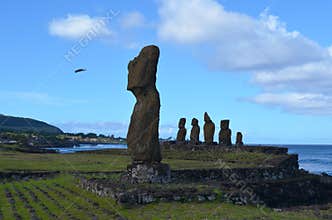Cliffs At The Costa Vicentina Natural Park, Southwestern Portugal. The Natural Park Of The Southwest Alentejo And Costa Vicentina Is Located On The Southwest Coast Of Portugal, With A Length Of 110 Km With A Total Area Of 89,595 Hectares. The Park Includes Various Unique Species Of Animal And Plant Life. In The Area Of The Park There Are Several Types Of Natural And Semi-Natural Landscapes And Habitats, Such As Abrupt Cliffs, Beaches, The Estuary Of The Mira River, Dune Systems, Heathlands, Marshes, Salt-Lined Steppes, Temporary Lagoons, Ravines, Etc. In The Area Behind The Coastal Cliffs All Along The Natural Park Coast, There Is A Large Amount Of Weathering Caused By The Sea’S Abrasive Action When The Whole Area Was Submerged At The End Of The Cenozoic Period 2 Milion Years Ago. On This Platform, Seen All Over The Western Coast, Fossilized Dunes Can Be Found. This Formation Stands On Consolidated Orange Sands As Well As Directly On Paleozoic Rocks Which Are Darker In Colour And Have Faulted And Folded Strata.
ID 915883352720 © Juanvilata | Megapixl.com
CATEGORIES
Sharing is not just caring, it's also about giving credit - add this image to your page and give credit to the talented photographer who captured it.:
KEYWORDS
alentejo aljezur bay beach biomes cenozoic cliffs coast coastal coastline cove coves dune dunes ecosystem endemic erosion formation formations fossilized geologic geology geomorphological geomorphology habitats islets layers masses mesozoic natural orange outcrops paleozoic park plant portugal quartz rock sand sands schist seascape seashore southwest species strata surf systems unconformity vicentina waves wind windy





































